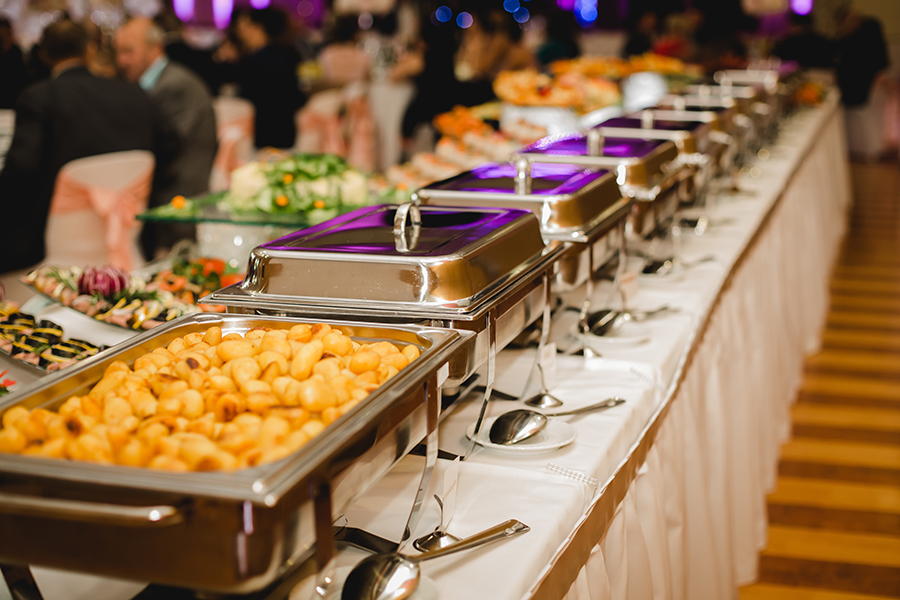In recent years, sustainability has become a key focus in industries around the world, and food packaging is no exception. With growing concerns about the environmental impact of plastic waste and the need for sustainable alternatives, eco-friendly food packaging has gained significant traction. Consumers, businesses, and governments are all increasingly focused on reducing the environmental footprint of food packaging while still ensuring the products remain safe and fresh. This article explores the importance of Eco Friendly Food Packaging, the different types available, and how they can contribute to a more sustainable future.

The Environmental Impact of Traditional Food Packaging
Traditional food packaging is largely composed of plastic, which, while inexpensive and durable, poses significant environmental challenges. Plastics are non-biodegradable and can take hundreds of years to break down in the environment. As a result, millions of tons of plastic waste end up in landfills, oceans, and waterways, causing harm to wildlife and ecosystems.
Additionally, plastic packaging is made from petroleum-based materials, a non-renewable resource. The production of plastic packaging also contributes to greenhouse gas emissions and climate change, making it a major concern for those looking to reduce their carbon footprint.
With these negative environmental impacts in mind, many companies and consumers are turning to eco-friendly alternatives to reduce waste and conserve resources.
Types of Eco-Friendly Food Packaging
There are several types of eco-friendly food packaging materials that offer practical and sustainable solutions for the food industry. These materials are biodegradable, compostable, or recyclable, reducing their environmental impact and promoting circular economies. Some of the most popular options include:
1. Paper and Cardboard Packaging
One of the most common alternatives to plastic is paper-based packaging. Paper and cardboard are renewable, recyclable, and biodegradable materials. Many fast food chains and grocery stores are switching to paper bags, paper cups, and cardboard packaging for their products.
For example, paperboard packaging is used for items such as cereal boxes, takeout containers, and food wraps. Additionally, wax-coated paper or compostable liners can help provide moisture resistance, making it a versatile material for food packaging.
2. Biodegradable Plastics (PLA and PHA)
Biodegradable plastics, such as polylactic acid (PLA) and polyhydroxyalkanoates (PHA), are derived from renewable plant-based materials like cornstarch or sugarcane. Unlike traditional plastic, these materials break down naturally over time, making them a more environmentally friendly option for food packaging.
PLA is commonly used for packaging items like yogurt cups, salad containers, and clear cups for beverages. PHA, a newer material, is gaining popularity due to its biodegradability in both marine and terrestrial environments, making it an excellent choice for products like packaging films and trays.
3. Plant-Based Packaging
Another eco-friendly option gaining traction is packaging made from plant-based materials, such as bamboo, sugarcane, and mushrooms. These natural materials are biodegradable and offer a sustainable alternative to plastic packaging.
Sugarcane-derived packaging, like bagasse, is a byproduct of the sugar production process and is used to create food containers, plates, and trays. Bamboo packaging is another versatile material, commonly used for food containers, cutlery, and straws. Mushrooms, specifically mycelium, are also being used as a sustainable packaging material for certain types of food products, providing a biodegradable and compostable solution.
4. Glass and Metal Packaging
Glass and metal are two other eco-friendly food packaging materials. Glass is 100% recyclable and can be recycled infinitely without losing quality. It is also non-toxic and preserves food well. Glass jars, bottles, and containers are commonly used for packaging sauces, jams, and beverages.
Metal packaging, such as aluminum cans and tins, is also highly recyclable and offers long-term durability. Aluminum packaging is commonly used for beverages and certain food products, as it helps keep the contents fresh while being a highly sustainable option.
Benefits of Eco-Friendly Food Packaging
1. Reduces Waste
One of the main advantages of eco-friendly food packaging is its ability to reduce waste. Many sustainable materials, such as paper, PLA, and plant-based packaging, are biodegradable and compostable, meaning they break down naturally and do not contribute to long-term waste accumulation in landfills or oceans. Additionally, the use of recyclable materials reduces the need for new raw materials and helps minimize resource depletion.
2. Protects the Environment
Eco-friendly food packaging reduces the environmental impact of the food industry by decreasing plastic pollution, conserving natural resources, and reducing greenhouse gas emissions. Sustainable packaging materials, like those derived from renewable plant sources, have a smaller carbon footprint compared to petroleum-based plastics, making them an important part of efforts to combat climate change.
3. Meets Consumer Demand for Sustainability
As consumers become more environmentally conscious, they are increasingly demanding products that align with their values. Many customers now look for food products that are packaged in sustainable materials. By choosing eco-friendly packaging, food businesses can appeal to this growing market and enhance their brand image, showing that they care about the planet and future generations.
4. Compliance with Regulations
Many countries and regions are introducing stricter regulations around single-use plastics, requiring businesses to adopt more sustainable packaging solutions. By switching to eco-friendly packaging, businesses can stay ahead of these regulations and avoid potential fines or restrictions.
Conclusion
Eco-friendly food packaging is not just a trend; it’s a necessary step toward creating a more sustainable food industry. With alternatives like paper, biodegradable plastics, plant-based materials, glass, and metal, businesses can reduce waste, conserve resources, and protect the environment. As consumer demand for sustainable products grows, adopting eco-friendly packaging is not only a responsible choice but also a smart business move. By making the switch to sustainable food packaging, businesses can contribute to a cleaner, greener planet while providing consumers with the products they desire.
